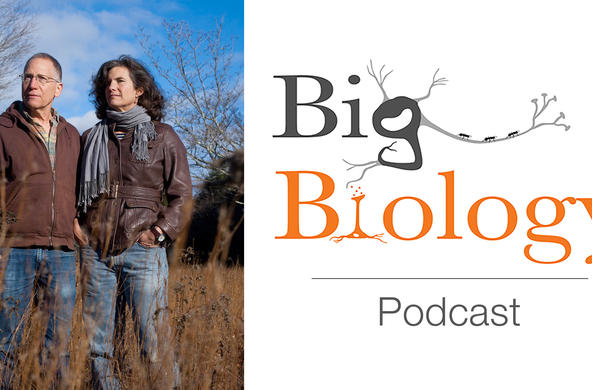Two institutions in the Hudson Valley have received a $5 million grant for a large-scale study aimed at reducing tick populations and Lyme disease. The five-year project is the first to explore Lyme disease management for entire communities.
The Steven & Alexandra Cohen Foundation has awarded a $5 million leadership grant to the nonprofit Cary Institute of Ecosystem Studies in Millbrook to support a scientific study they’re calling “The Tick Project.” In partnership with Annandale-on-Hudson-based Bard College, the study seeks to reduce Lyme disease in neighborhoods in Dutchess County, home to one of the nation’s highest Lyme disease infection rates. Here’s Cary Institute Disease Ecologist Dr. Richard Ostfeld.
“Despite that fact that we’ve known for 10 or 15 years a number of different ways that are fairly effective at killing ticks, so far we have not been able to capitalize on those methods to actually reduce the incidence of Lyme disease and other tick-borne diseases in the human populations,” says Ostfeld. “And that’s what we really need to do. And that’s what we’re very hopeful that this study will actually be able to accomplish.”
Bard College Biologist Felicia Keesing says they will recruit participants from 24 neighborhoods throughout Dutchess County that have historically high levels of Lyme disease. Each neighborhood will consist of 6-10 square blocks and roughly 100 properties. Keesing says each property will be treated with one of four different treatment combinations via two methods.
“One is to treat ticks in the environment with a fungal spray and the other is try to reduce the number of ticks on critically important hosts that are the ones responsible for infecting most ticks,” says Keesing.
Keesing says she cannot reveal which neighborhoods will be studied and participants will not know which one of four combinations of treatments their properties receive — spray and bait boxes, both with active ingredients; active spray and inactive bait boxes; inactive spray and active bait boxes; or placebos. Keesing says the products for the study needed to be safe for people, pets and the environment; shown to be effective at killing ticks; and be commercially available.
“The spray that we’re using is called Met52. It’s a spray that contains the spores of a fungus called Metarhizium anisopliae. It’s a mouthful but essentially it’s a naturally occurring fungus that lives in the soil throughout this region. And it’s been shown to be effective at killing ticks. The strain that has been commercially developed is particularly effective at killing ticks and actually does not harm beneficial arthropods,” Keesing says. “The second product is what’s called a rodent bait box. It’s also called a Tick Control System. And it’s essentially a small, little black box that has an entry point and some bait inside. And small mammals get attracted by the bait, go inside, and as they pass in to get to where the bait is, they pass under a little wick that’s coated with a chemical called fipronil that gets on the back of the small mammal and kills the tick on the animal. The fipronil is the same active ingredient as what’s used in a number of different products for pets, including Frontline. And, in fact, the dose that’s inside the bait box is 10 times lower than the dose that people put on their dogs, for example.”
Ostfeld says the treatments are planned to begin in spring 2017.
“So we’re deploying these methods over four consecutive years — the whole study is five years — and we think that is long enough to actually ask, for the first time, whether sort of bludgeoning these ticks with really potent interventions that are environmentally safe and safe for children and pets will actually do what we need it to do to protect the public against tick-borne disease,” Ostfeld says.
Ostfeld says a few hundred residents have already been in touch expressing interest in participating in the study following an informational mailer that was recently sent. This—before before researchers have actually requested participation.
“They don’t want to just be victims of problems with diagnosis and problems with treatment,” says Ostfeld. “They agree with us that prevention is really where it’s at and so they want to help, and it’s great to see.”
Again, Keesing:
“Our goal for this study is that we’re going to answer once and for all whether treating people’s properties can prevent cases of Lyme disease,” says Keesing. “If it doesn’t work with this massive scale and all the things we’re throwing at these ticks, then this is not probably going to be a fruitful direction.”
The gift from the Steven & Alexandra Cohen Foundation accounts for more than half of the $8.8 million that the Cary Institute is seeking for The Tick Project. Research will be carried out in collaboration with the Centers for Disease Control and Prevention, the New York State Department of Health, and the Dutchess County Department of Behavioral and Community Health. More information is available at The Tick Project.







